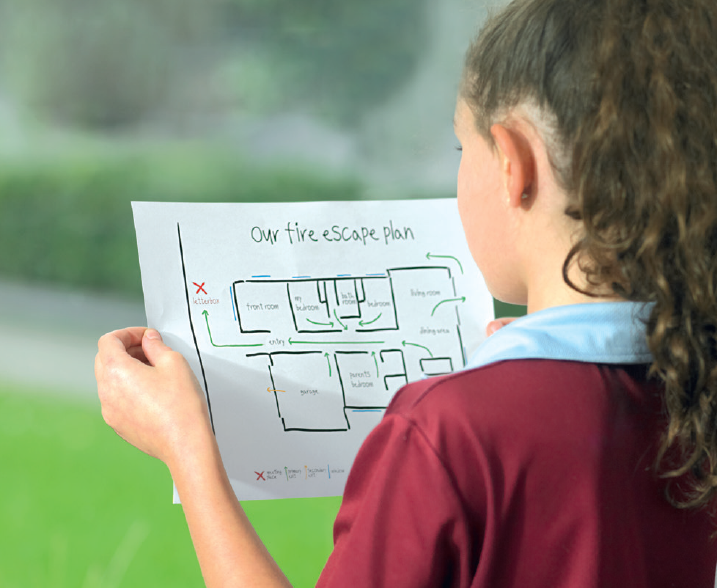 Plan how you would escape a fire in your home
Plan how you would escape a fire in your home
Families who are well-prepared are more likely to escape their homes safely and without panic.
As part of your plan, all family members should know:
- The two quickest ways out of every room
- How they will exit from upstairs if your home has a second storey
- An agreed-upon meeting place outside, such as the letterbox
- How they will call Triple Zero (000)
Download and print a home fire escape plan template (PDF 148.6KB) to help create your plan.
If someone in your family is older or has a disability, complete the Prevent Detect Escape e-learning module.
Top survival tips
- If your clothes catch fire, stop, drop and roll
- Get down low and stay out of smoke.
- Use the back of your hand to check doors for heat before opening
- If it's safe, close doors to slow down the spread of fire and smoke.
- Alert other people on your way out.
- Get out and stay out.
- Meet at a safe place such as the letterbox or footpath outside your home.
- Call 000 (triple zero) from a mobile phone or a neighbour’s phone. Ask for FIRE when the call is connected.
What parents need to know
Children are less likely than adults to wake up to the sound of a smoke alarm. Think about how you might be able to reach children’s bedrooms if regular access is blocked by fire.
Families should practise ‘fire drills’ twice a year – more often with younger children.
Useful tips for parents
- Turn it into a game by timing how quickly they can escape
- Make sure children know their home address and how to call Triple Zero (000)
- Use online games and activities to teach children about fire safety
Never lock your deadlocks when you're at home
During a fire it will be dark and smoky – and a deadlocked door could block your escape. If you must keep deadlocks locked, leave your keys in the door.
Basic treatment for burns
- Remove clothing around the burn, unless it has stuck to the skin
- Cool the burn under running water for 20 minutes. Never use oil, butter or ointment
- Cover the burn with a clean cloth or cling wrap and keep the patient warm
- See a doctor if the burn is blistered, larger than a 20 cent coin, or on the face, hands, feet or genitals.
Page last updated: Tuesday, 27 August 2024 11:21:22 AM